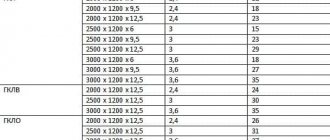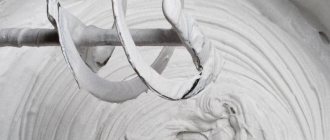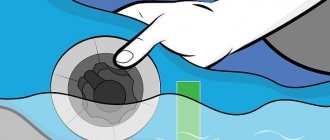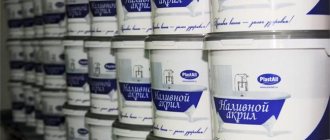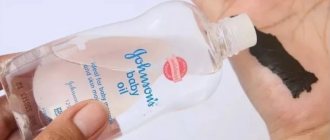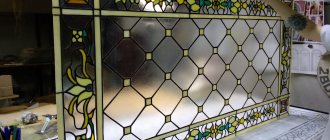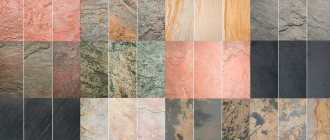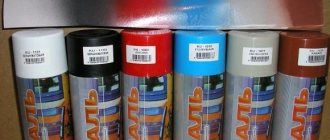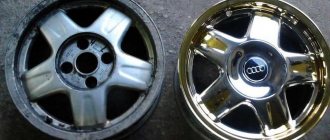When planning a room, creating its design, the question arises: “How to bend drywall?” It is this building material that can level the walls, make the ceiling flawless and make the entrance to the room a beautiful arch. Drywall is not only a perfectly smooth material, it is environmentally friendly and easy to process. Masters of their construction craft and ordinary people who care about a place for personal relaxation and pleasant pastime work with him. If you bend a plasterboard sheet, you can use it to make an arch and a multi-level ceiling, which will amaze you with its beauty of the play of lighting. It is possible to decorate a picture on the wall or a shaped niche for a TV using bent drywall.
The main thing is to follow the exact algorithm of actions when implementing ideas, otherwise the design will be flimsy and will not last long.
The use of bent gypsum board surfaces for finishing
In repairs, plasterboard is used to create partitions, cladding walls and ceilings. The walls themselves often have smooth transitions, arches, semicircles and other decorative design features; their finishing requires material of the appropriate shape.
Since the material consists of pressed gypsum (the main material of the core), this makes it possible to bend it: gypsum itself is known to be a fairly pliable material. The advantage of plasterboard sheets is their excellent, even appearance, so they need to be bent in the correct way without compromising their integrity.
Bent gypsum plasterboard opens up new possibilities in the design of your living space: with its help you can actually build beautiful multi-level ceilings, create smooth transitions, arches, and domes.
To work with curved surfaces, a separate type of building material has been developed - arched plasterboard, which has high strength. The fact is that its thickness is only 6-6.5 mm, this allows the material to be bent into the desired shapes, and the gypsum core is reinforced with glass fibers. Using this material, it is customary to create various curved structures and design solutions.
It has two disadvantages:
- glass fibers impart strength and bending ability at the same time. For this reason, cutting a sheet and securing it with self-tapping screws can be difficult;
- high cost of gypsum boards. For domestic needs, the use of arched plasterboard is not economically feasible in most cases.
That’s why people often use ordinary drywall: knowing how to bend it, it is successfully used when finishing non-standard surfaces and creating unique interiors. This allows installation work to be carried out without a significant increase in the expenditure budget. Below are some common ways to bend drywall.
Features of the material
The material today is actively used in creating various partitions, leveling walls, and organizing arches. Moreover, each of these structures may have niches, transitions and other elements, the manufacture of which requires special knowledge explaining how to correctly bend drywall and give it the required shape.
This material is based on compressed gypsum, which is covered on both sides with layers of paper. It is the presence of such a middle part that determines the high plasticity of the plasterboard sheet. However, despite the many advantages that arched plasterboard has, it has a number of significant disadvantages:
- When attaching a sheet with self-tapping screws, serious difficulties can arise. This is explained by the fact that the gypsum is additionally reinforced with glass fibers, which increase its strength.
- High price relative to standard types of gypsum boards. Therefore, arched plasterboard is recommended to be used only when creating bent forms.
Installation of drywall is most often carried out on a pre-prepared structure made of steel profiles. This frame facilitates the process of creating original forms and allows you to secure the source material.
Basic conditions for bending
When bending gypsum board, it is important to understand that it has a maximum load that this material can withstand. In order to maintain its integrity, certain conditions must be observed when working with it:
- the sheet cannot be bent in the transverse direction;
- the smaller the radius of curvature of the created shape, the thinner the starting material should be;
- when bending with the front part outward, the maximum radius should be more than 100 cm;
- when bending with the front part inward, the radius should exceed 60 cm;
- Installation of the finished structure is carried out in two layers.
If the above conditions are not met, then over time the sheet will return to its original shape, tearing the screws out of the profile.
Dry fold
It is best to use arched plasterboard for these purposes. The sheets are elastic, lightweight, and bend to any radius. Arched plasterboard is not widely used due to its high price and small thickness. To assemble a strong and rigid structure, you have to lay the sheets in two layers. Therefore, for the manufacture of elements of complex shapes, ordinary gypsum board is most often used.
For dry bending, it is necessary to make a frame in advance that follows the shape of the element. To do this, you can use a drywall profile, plywood or other materials. The sheet is secured on one side with self-tapping screws and slowly given the desired bend, pressing it tightly against the frame. After this, the second edge is fixed. Before bending drywall, pay attention to its thickness: the larger the radius of curvature, the thinner the sheet should be.
How to bend arched drywall
This drywall has a minimum thickness of 6.5 millimeters. This already adds flexibility to the sheets. Additionally, fiberglass is built into their core. It is created like a regular one.
Weave thin threads. They can be obtained from glass by melting a quartz-based mineral composition with the formula SiO2. The silica melt is drawn through the molding holes, while simultaneously cooling.
Arched drywall
The result is yarn, only glass. In a fine-fiber state, the material becomes flexible and pliable. The threads are woven together. The resulting fabric serves as reinforcement not only in plasterboard, but also in a number of roofing coatings and waterproofing materials.
The fiberglass core of arched drywall holds gypsum particles, preventing them from falling apart when bent. Accordingly, specialized sheets do not need to be pre-wetted. This makes it possible to use a moisture-resistant version of drywall.
In other words, if a curved structure is planned in a bathroom, covered terrace or toilet, you need to use arched plasterboard even with a small bend, because the sheets must be moisture resistant. Simple ones in rooms with high humidity will swell, change geometry and will not last long.
A profile helps in deforming arched sheets. It makes it easy to bend drywall at home , because the special frame consists of “links”. Their bottom is uniform, but there are gaps in the sides. They allow you to move the walls, changing the geometry of the profile.
The caveat is that it costs several times more than usual. Since you have to fork out money for arched drywall, many try to save money on a frame for it, using a regular profile. how to bend it for an arch in the final chapter.
Optimally flexible material – which one?
Before bending drywall for an arch, you need to purchase suitable material. The thinner one is easier to bend. Suitable flexible plasterboard has a layer thickness of 6.5 or even 6 mm. And its gypsum content is complemented by fiberglass reinforcement.
By choosing this type of material and having information on how to round off drywall, it becomes possible to build niches with arches, multi-level ceilings and various fancy curved interior shapes.
To try to bend a sheet of gypsum board yourself, you need to purchase flexible drywall in the store. This way you can bend drywall with little effort. Since the bending radius of thin material is much larger than that of ceiling or wall HA sheets.
For thin sheets, frames are made from profile material with cutouts on the sides. Someone who is determined to figure out how to bend drywall
with your own hands, you won’t be intimidated by the cost of this material compared to conventional ones.
Naturally, a beginner who decides to bend drywall on his own cannot avoid difficulties at first. Therefore, to train and hone your skills, it is better to find a small piece of material. And then start the process.
Rules for bending drywall sheets
Sheets of standard drywall can also be bent in a semicircle, but following some rules:
- The bending action can only be performed longitudinally.
- For a smaller radius of curvature, thinner sheets of plasterboard material are selected.
- The maximum bending radius dimensions for this material are observed:
- facing outward – from 1000 mm;
- facing inward – from 600 mm.
If these rules are not followed, then the bent plasterboard sheets will not hold their bending shape, and after attaching them to the wall, the screws may be pulled out of the profile structure.
To bend plasterboard material, you can use one of the following methods:
- Dry – with minor bends and a simple configuration.
- Wet – suitable for arched curves.
- Using cuts - for sharp bends that have a complex structure (if the radius of curvature is from 100 mm to 400 mm).
Later in the article we will talk about each of these methods in more detail.
Bend drywall: wetting with water
Due to its simplicity and effectiveness, this method is in first place in popularity. Gypsum absorbs moisture well, with its help it becomes more flexible; this is used to shape the drywall into the desired shape.
Before work, it is recommended to prepare a template according to which the bend will take place. It can be made from plywood; it will allow you to bend the surface more conveniently.
- Liquid is applied to the surface using a paint brush. It is necessary to lubricate both sides of the sheet so that the liquid penetrates the cardboard and the top layer of gypsum, but does not completely saturate the entire core.
- You need to wait a quarter of an hour: the liquid will be absorbed into the pores of the plaster, softening it, making it “plasticine”.
- Having assessed the readiness of the material, you can begin to bend it to the required shape and angle.
Important! This method can be used if the surface has a large radius and sufficient smoothness.
If the angle of curvature is too large, the drywall may crack or break when bent. When working with such radii, other methods are used.
In any other case, during installation and after drying, the gypsum board will retain its reliability.
Where is bent plasterboard used?
GCR is widely used in repairs:
- leveling ceilings and walls without a frame;
- installation of partitions;
- creation of suspended ceilings;
- production of arches and smooth transitions;
- arrangement of figured structures.
Drywall is a kind of sandwich of cardboard around the edges and gypsum board in the middle, which allows for easy bending. Gypsum is a very pliable and “mobile” material, which is given strength by thick cardboard. Initially, sheets of drywall have a perfectly flat plane, and it is important to bend it in such a way that the integrity of the cardboard is not compromised.
The use of plasterboard for finishing walls and ceilings in an apartment
With the advent of gypsum boards and options for bending it, it became possible to make the interior of your apartment unusual with multi-level ceilings, semi-arches and smooth transitions.
Wet fold
This method produces a tighter bend. Before bending the drywall for the arch, prepare a template. Its radius is calculated taking into account the thickness of the sheet. The side of the slab facing the inside of the fold is moistened with clean water at room temperature using a roller or brush and left for 10 minutes until completely absorbed. If the sheet is not too thin, you can additionally roll it with a needle roller or pierce it with an awl. Please note that the material should be slightly damp and not soaking wet.
After absorbing the water, the soaked drywall is carefully laid on the template and fixed. The material remains in this position until it dries. Using the wet method, you can bend not only moisture-resistant drywall, but also gypsum boards and even fire-resistant drywall. When all the moisture has evaporated, the sheet will completely restore its performance characteristics, but will take on a new shape.
Work methodology
Before bending a sheet of drywall for an arch, you must wait until the water is absorbed into the material. This may take about an hour. Work with great care, as a wet panel can be damaged. Once you have given the sheet the desired shape, you need to check the room to get rid of excess moisture.
Do not wet the sheet too much, otherwise the paper may tear. At the next stage, you need to fix one of the edges of the sheet, then you need to start bending the sheet by screwing in the screws. It is important to take care to achieve a smooth curve. The distance between the self-tapping screws and each other should be equal to the limit of 10 to 15 cm, otherwise the curve will turn out wavy. It is necessary to install the screws very carefully, because otherwise you will have to spend more effort on the final leveling of the surface by applying putty.
How far can you bend drywall?
Still, drywall is not paper and you can bend it only to certain radii. The bending radius of drywall depends on its thickness and the size of the sheet that needs to be bent.
In the table you can see the dependence of the bending radius on the parameters of the Knauf plasterboard sheet.
| Thickness of plasterboard sheet, mm | Bending radius, mm | Bending radius, mm |
| Drywall bending technology | Dry way to bend drywall | Wet way to bend drywall |
| 6mm | more than 1000 | From 300 |
| 9mm | more than 2000 | From 500 |
| 12mm | more than 2750 | From 1000 |
Please note that the table shows two ways to bend drywall, these are the so-called “wet” and “dry” ways to bend drywall. The very names of these methods reveal the technological principle of bending drywall
The wet method involves moistening the gypsum plaster sheet, which causes the gypsum core to soften and be easily bent. The dry method of sheet bending is based on the technical characteristics of the sheet itself. The thinner the sheet, the easier it bends. The developers initially checked the safe bending radii of plasterboard sheets and compiled tables in which the bending radius is tied to the thickness of the sheet. Let's take a closer look at the wet and dry bending methods.
How to bend plasterboard in a semicircle
Work with the product is carried out at home completely with your own hands, but in some difficult situations assistance may be required.
On a note! Gypsum-based products are fragile, so the process must be performed carefully and without haste. To understand the principle, it is better to practice on small scraps.
Plasterboard sheets come in different thicknesses, and accordingly, their ability to bend is different.
Dry method
This method allows you to obtain radius parts with different bends, which depend on the thickness of the material. So, with a standard thickness of 12.5 mm, the minimum radius will be 275 cm, and with 8 mm - 155 cm. Products of large dimensions are not used.
Using a needle roller
The tool is a roller with needles. GKL slabs up to 8 mm thick are suitable for this work; thicker parts cannot be bent completely “dry”.
Process diagram:
- The fixation site is prepared: the area is cleared of all unnecessary things.
- Using a metal profile, the desired bend is formed. To do this, the material is cut and fixed along the selected trajectory.
- Both sides of the fragment are processed with a needle roller. The part should be heavily perforated.
- Next, the installation is carried out very carefully. It is necessary to bend the gypsum board gradually, creating the desired shape. Fastening with self-tapping screws is also carried out sequentially.
- The screws are first screwed in halfway, and after the area is completely rounded, final fixation is carried out.
When processing gypsum board with a needle roller, the structure of the material is disrupted on both sides, and its performance characteristics are greatly reduced; moreover, during bending, the sheets often break, so the method is not popular.
This technology does not allow creating complex shapes: if you bend a fragment in both directions, then it will burst. For more reliable fastening of the structure at the edges, a special corner is used.
Using a knife or cutter
By choosing these tools, it is possible to create a bend that cannot be achieved with the previous method. Each fixture is used to create different shapes of parts. The main condition is a sharp blade. It is advisable to provide for the possibility of sharpening or replacement if processing becomes difficult.
Cutting a workpiece with a construction knife is quite simple:
- To bend a fragment under an arch, it is necessary to make many cuts in the shape of the letter V. The smaller the distance between the sections, the smoother the degree of curvature can be obtained. The work is carried out from one side: the blade is immersed so as not to damage the back of the pasted cardboard.
- Since cutting disrupts the structure of the gypsum sheet, before fixing it is recommended to drill out holes for self-tapping screws to prevent deformation. Countersinking is also carried out so as not to immerse the screw head with force. The fragments can be fastened to a self-prepared metal or special arched profile.
It is not difficult to make notches with a sharp knife, but the bending radius with this method is relatively small.
The disadvantage of this method is that you cannot bend the plasterboard element with multi-stage waves, and besides, finishing takes a lot of time.
To bend a complex shape, a cutter is used:
- Marking in progress. The distance between the lines is determined based on the radius that you want to obtain.
- The gypsum is sampled to a depth of 1–2 mm less than the thickness of the sheet; the base cannot be completely removed.
- The cutter is selected with a small volume to prevent deformation of the element.
Sampling using a cutter is a rather problematic task, especially for a home craftsman, but the bending of the sheet here will be maximum
. A part processed in this way will bend in any direction. But due to the fact that the overall rigidity is broken, the fragments cannot be used in areas that will be subject to constant mechanical stress.
You can correct the situation using a template and putty. To do this, a reverse form is made, according to which it is planned to bend the gypsum board, the processed element is applied to the workpiece and fixed. After fixing, the side with the sample is covered with putty. In a similar way, you can obtain decorative elements for the interior.
A good solution when milling gypsum boards is to subsequently apply putty to fill the grooves (slots), this approach allows you to create a durable radial surface
Wet method
For this process, ordinary drywall is used. The moisture-resistant version cannot be processed, so when performing work in a room with high humidity, the material is bent using a dry method.
The wet method is most often used to obtain a semicircle. If a more complex shape is needed, much more time and effort will be required.
The technology is as follows:
- A template is being prepared. Various materials are used for this, but the design must be rigid and stable.
- Parts of the required size are cut out from the gypsum board sheet.
- Water at room temperature is applied to the products with a sponge or roller. Take into account that waterlogging should not be allowed, otherwise the product will become unusable.
- To achieve better penetration of the liquid into the base of the slab, the parts on one side are rolled repeatedly with a needle roller.
- The element is fixed at the edge of the template and begins to gradually bend. Fixation is carried out as the desired shape is obtained.
- A day later, the drywall is released and installed in place.
When bending a sheet using a wet method, the product can be mounted only after it has completely dried and gained strength
. If you need to bend a small part, you can do without a mold and do the work on site.
On a note! The gypsum board should bend along, and not across, so when cutting a part, the direction is immediately marked.
Application in design
These fragile slabs have become often used to implement the most intricate interior design ideas. This was facilitated by their ability to take a wide variety of shapes, including curved ones. The latter are used for different purposes.
- Using curly and curved shapes, you can add acoustic and sound effects to the room. This feature is often used in large halls: theaters, offices, entertainment centers and similar premises.
- Behind the curved figures of the interior, you can very easily hide various communications without losing the overall appearance. In addition, gypsum is resistant to high temperatures, which makes it possible to safely lay electrical cables under it.
- The curved shapes of the panels expand the designer’s capabilities, as a result of which he can bring to life his bold and original ideas for the interior design plan.
Bend drywall: work with a roller
This method is in second place in popularity, like bending drywall. You will need a needle roller with which you can make holes in the cardboard covering and plaster (top layer only).
- Pressing the roller onto the gypsum board, pass it on both sides of the sheet, making holes over the entire area.
- Then evenly and thoroughly moisten the plasterboard with water using a brush: the holes will help better absorption, and after softening they will allow the drywall to bend more strongly.
Attention! It is necessary to bend carefully, constantly making sure that the sheet does not crack. If necessary, you can add a small amount of water.
Bend drywall: special cutter
The cutter allows you to create curved surfaces from gypsum plasterboard and is the answer to the question of how to bend drywall for a small radius arch.
The cutter should plunge into the surface to a depth of about 1-3 mm. That is, the tool must make an incision almost to the entire depth of the plaster, without affecting only the cardboard layer on the back side. This will allow the material to take the desired shape after processing.
How to bend drywall correctly: using a cutter, cut strips are made perpendicular to the bend; the stronger the bend, the more often the cuts need to be made (every centimeter and more often).
This tool allows you to make very convenient V-shaped cuts in the material, which allow you to bend the plasterboard more strongly. The gaps created by the cuts can then be filled with putty, which will strengthen the entire structure.
We bend drywall ourselves (video)
source: //tvoyprorab.com/instruktsiya-kak-sognut-gipsokarton-polukrugom-prostie-sposobi
Probably, each of those who worked with such a universal and very convenient construction and finishing material as gypsum plasterboard wondered how to bend drywall without damaging it. Naturally, the curved outlines of arched structures and “curly” partitions, spectacular multi-level suspended ceilings, at first glance of a novice master, seem simply an unattainable result. In fact, everything is much simpler.
It turns out that even though it looks fragile, drywall is still very flexible, and if you know a few tricks, you can easily bend it with an arc. Note that to create curved forms, the easiest way is to use a special type of gypsum board - arched. It has a thickness of 6.5 mm and has good ductility, which is achieved by additionally reinforcing the gypsum core with glass fiber. However, the cost of this material is higher than usual, and due to its small thickness it must be installed in two layers.
Today we will tell you how to properly bend drywall, describe the technology of this process and consider the most common methods of achieving the desired result.
Before starting a detailed description of the operating technology, it should be noted that the gypsum board sheet must be bent only along its length.
Second method, dry (but requiring additional finishing)
A popular option, however, often “masters” miss an important aspect of how to correctly bend drywall, which results in an unreliable structure, which is subsequently susceptible to peeling of the top layer of finishing, cracks appearing and the entire material “failure.”
With a high-quality and detailed implementation of the method, it is possible to form a bend in drywall with a radius of less than 1 m.
Work order:
- The workpiece is cut to size. It is placed on a durable surface with a smooth edge, for example, on a table with the side facing up that will be on the outside of the bend. Along the entire length of the workpiece, markings are made across it in straight lines at a distance of 4-5 cm from each other.
- Using a rule and a construction knife, cuts are made along the marks. You only need to cut through the cardboard, without going too deep into the plaster, so as not to chip it.
- By pulling the sheet to the edge so that the cut is located above the edge of the table, the sheet is broken without tearing the second layer of cardboard.
- This continues until all marks are cut and chipped. Usually, the “would-be-masters” finish here, screwing the gypsum board in this state to the prepared frame. However, this is not the end of the way to bend drywall correctly. The sheet is carefully moved to the prepared stand with the required bend, with cuts upward.
- The entire surface is carefully primed so that the primer reaches all surfaces with exposed plaster. Using putty or adhesive, all cuts are sealed, and the surface is exposed with a layer of mortar of at least 1.5 mm.
- A reinforcing fiberglass mesh is placed on top and pressed into the solution with a spatula. Everything is leveled and smoothed out.
Only after the solution has completely dried can you use drywall for installation on the prepared frame.
When round plasterboard partitions are made
If at the time of manufacturing the curved wall only single sheets were laid on the rest of the frame, after the round plasterboard partitions are covered with it in two layers, you can continue covering the structure. Upon completion, all that remains is to coat with putty all the joints of the sheets and the places where they are fixed with screws
. Then you should think about finishing the constructed wall. In addition, there is almost certainly more than one wire outlet along the length of the partition, so you will also have to deal with installing power points.
Subsequently, when the finishing work is completed, the drywall will be hidden under a layer of decorative plaster or wallpaper. Particular attention will need to be paid to the skirting boards, which must have an appropriate radius. Having coped with this task, you will receive something that you can be justifiably proud of - a spectacular result of your work. After all, through simple actions and with a minimum of materials, it was possible to make a rather elegant turn of the wall, not at an angle of 90 degrees, but in a beautiful bend.
- Author: admin
Rate this article:
- 5
- 4
- 3
- 2
- 1
(4 votes, average: 9.5 out of 5) Share with your friends!
Water
It involves the use of water: the sheet needs to be moistened.
Gypsum, as a component of any sheet of drywall, is a porous and soft material. This means that it perfectly absorbs moisture, as a result of which it becomes even softer. But you can do whatever you want with a soft leaf: while it is in this state, you can give it the desired shape without fear of injuring the leaf.
Many people mistakenly think that soft, damp drywall will dry out and return to its previous shape. This is not true: once it dries, it will retain the shape that you gave to the sheet.
Method of “dry” bending of drywall
This method is used when you need to make an arch with a slight bend and a simple configuration, for example, rounding corners in a passage or corridor.
Method of “dry” bending of drywall
To begin with, prepare a sheet of the required size - measure the required surface of the sheet and cut it out. A metal frame is mounted for the arch, a profile is attached to it with self-tapping screws, the edges of which are cut to give the desired shape. Then a sheet of drywall is applied to the finished frame, very slowly bent along this structure, and then fixed with self-tapping screws. You only need to bend it along its length and very carefully to avoid breakage. After fixing, the arch is covered with putty.

